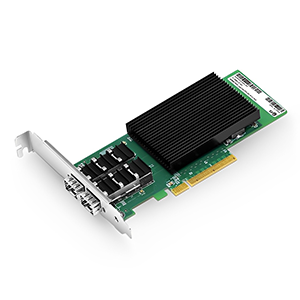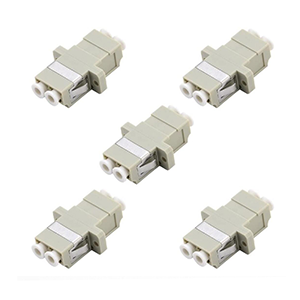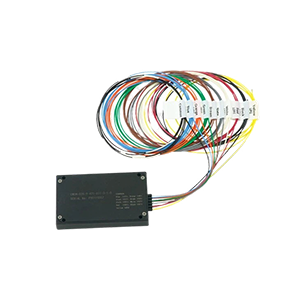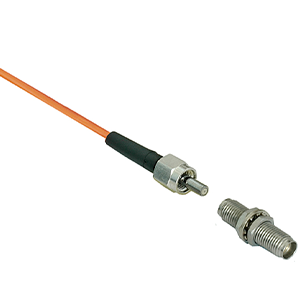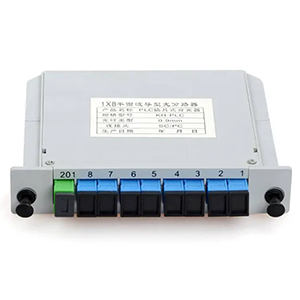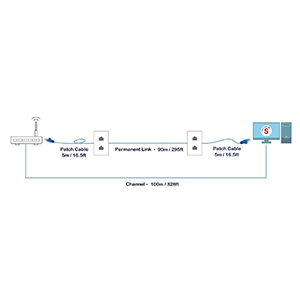I am very happy to introduce you to the basic concepts, working principles and applications of LAN network cards in different scenarios. As a key component for connecting computers to LAN, LAN network cards have different types and interfaces to meet the needs of wired and wireless networks.
In this article, I will explain the definition and basic principles of a LAN network card to help you understand how it implements data transmission between the computer and the LAN. At the same time, I will explain the different types and classifications of LAN network cards, such as Ethernet network cards and wireless network cards, so that you can have a more comprehensive understanding of their characteristics.
Introduction to LAN network card
Definition and rationale:
A Network Interface Card (NIC), also known as a network adapter or Ethernet adapter, is an interface between a computer or device and a Local Area Network (LAN). It is responsible for converting the computer’s data into a format that can be transmitted over the local area network and processing the received data.
The basic working principle of the LAN network card is to communicate with the LAN through the physical layer and data link layer protocols. It connects to the computer’s motherboard or expansion slot and is connected to the LAN’s switch or hub via cables.
When the computer sends data, the operating system passes the data to the network card. The network card converts the data into electrical signals that are sent over the network cable to the target device. On the other hand, when the network card receives incoming data, it converts the electrical signal into computer-readable data and passes it to the operating system for processing.
Network card type:
There are many types of LAN network cards, two common types of which are Ethernet network cards and wireless network cards.
-
Ethernet NIC: Ethernet is a commonly used wired LAN technology, so Ethernet NIC is the most common type of network card. It uses the Ethernet protocol to communicate and is connected to a LAN switch or hub through a network cable. Ethernet network cards usually have an RJ-45 interface for plugging in network cables.
-
Wireless NIC: A wireless NIC is a type of network card used for wireless LAN (WLAN) connections. It uses wireless communication technology, such as Wi-Fi, to communicate with a wireless router or access point. Wireless network cards usually have antennas or external antennas that are used to receive and send wireless signals.
In addition to Ethernet network cards and wireless network cards, there are other types of network cards, such as fiber optic network cards (Fiber NIC), used for fiber-optic network connections, and high-speed network cards (Gigabit NIC) and 10 Gigabit network cards (10 Gigabit NIC), used for Supports higher data transfer rates.
A LAN network card is an interface that connects a computer or device to a local area network. It is responsible for the conversion and processing of data to achieve communication with the local area network. Common types of network cards include Ethernet network cards and wireless network cards, for wired and wireless LAN connections respectively. Other types of network cards are available for specific network environments and needs.
Application scenarios of LAN network cards
Wired network:
LAN network cards are widely used in wired networks to connect computers to Ethernet or LAN switches. The following are some application scenarios for using LAN network cards in wired networks:
-
Office environment: In an office or corporate network, computers are usually connected to a LAN switch through a wired connection. LAN network cards play a key role in connecting computers to network infrastructure, allowing computers to communicate with other devices, share resources, and access the Internet.
-
Data Center: A data center is a place where a large number of servers and network equipment are hosted. LAN network cards are used to connect servers to switches or routers in data centers to achieve high-speed, reliable data transmission. High-performance network cards can support high-bandwidth and low-latency data center applications.
-
Industrial control systems: In industrial environments, LAN network cards are widely used to connect industrial control equipment and sensors to the LAN. These devices can be PLCs (programmable logic controllers) for monitoring and controlling production processes, or sensors and actuators for real-time data collection and control.
wireless network:
LAN network cards also have important applications in wireless networks, used to connect computers to wireless routers or wireless access points. The following are some application scenarios for using LAN network cards in wireless networks:
-
Home Network: Many families use wireless networks to connect various devices in the home, such as laptops, smartphones, smart TVs, etc. LAN network cards enable these devices to wirelessly access the Internet and share resources by connecting to a wireless router.
-
Public places: In public places such as cafes, hotels, airports, etc., wireless networks are the main Internet access method provided to users. The computer obtains an Internet connection by connecting to a wireless access point through a built-in or external wireless card.
-
Mobile devices: Mobile devices such as smartphones, tablets, etc. usually have built-in wireless network cards that enable them to connect to wireless networks through Wi-Fi. This allows users to access the Internet, transfer data and use online services anytime and anywhere.
Whether it is a wired network or a wireless network, LAN network cards play a key role in connecting computers and LANs to achieve data transmission and communication. They enable computers to participate in local area networks, share resources, access the Internet, and interact with other devices.
Interface type of LAN network card
Ethernet interface:
The Ethernet interface is a common type of LAN network card interface and is used for wired network connections. The following are some common Ethernet interface types and their application scenarios:
-
RJ-45 interface: RJ-45 (Registered Jack 45) is a commonly used Ethernet interface type that uses 8 metal contacts to connect network cables. This is the most common type of Ethernet interface and is used to connect computers, routers, switches, and other Ethernet devices. The RJ-45 interface is typically used to transmit Ethernet signals based on copper cables.
-
Optical fiber interface: The optical fiber interface is used to connect to the optical fiber network. It usually uses types of fiber optic connectors such as SC (Subscriber Connector) or LC (Lucent Connector). Fiber optic interfaces transmit data through optical fibers, providing higher bandwidth and anti-interference capabilities. They are suitable for scenarios that require longer distance transmission and high-speed data transmission, such as data centers, wide area network connections, etc.
Wireless interface:
Wireless LAN cards use different types of wireless interfaces to connect computers to wireless networks. The following are some common wireless interface types and their application scenarios:
-
Wi-Fi interface: Wi-Fi (Wireless Fidelity) is a commonly used wireless LAN technology used for wireless data transmission. Wi-Fi interfaces are often built into laptops, smartphones, tablets, and other devices to connect to wireless routers or wireless access points. The Wi-Fi interface supports different wireless standards (such as 802.11a/b/g/n/ac/ax), providing flexible wireless connections and high-speed data transmission.
-
Bluetooth interface: Bluetooth is a short-range wireless communication technology used for data transmission and communication between devices. Bluetooth interfaces are usually used to connect computers and Bluetooth devices, such as wireless mice, wireless keyboards, Bluetooth headsets, etc. It is suitable for inter-device communication that requires simple, low-power consumption, and supports a wide range of application fields, such as personal consumer electronics, automotive equipment, medical equipment, etc.
In addition to the above interface types, there are other types of LAN network card interfaces, such as USB interfaces, PCIe interfaces, etc., for specific equipment and application requirements. These interface types determine the physical connection method and transmission medium of the network card to achieve data transmission and communication between the computer and the LAN.
Speed and technical standards of LAN network cards
transfer speed:
The transmission speed of LAN network cards is usually measured in Mbps (Megabits per second) or Gbps (Gigabits per second). The following are some common LAN network card transmission speeds:
-
10/100 Mbps: This is one of the earliest Ethernet transmission speed standards. The 10/100 Mbps network card supports two speeds, 10 Mbps and 100 Mbps, and can automatically adapt to the network environment. This kind of network card usually uses an RJ-45 interface and is widely used in office and home networks.
-
1000 Mbps (or 1 Gbps): Also known as Gigabit Ethernet, this is one of the most common Ethernet transmission speed standards currently. 1 Gbps network card provides higher transmission speed and is suitable for application scenarios that require greater bandwidth, such as data centers, high-speed file transfer, etc.
-
10 Gigabit (10 Gbps): 10 Gigabit Ethernet is a higher-speed Ethernet standard that provides transmission speeds of 10 Gbps. It is suitable for scenarios that require extremely high bandwidth, such as large-scale data centers, high-performance computing, etc.
technical standard:
LAN network cards use different technology standards to support different types of network connections and communications. The following are some common LAN network card technical standards:
-
Ethernet: Ethernet is the most common wired LAN technical standard and defines the transmission protocol and physical layer specifications of Ethernet. Ethernet uses the CSMA/CD (Carrier Sense Multipoint Access/Collision Detection) protocol to manage data transmission and supports different transmission speeds and transmission media, such as Ethernet optical fiber and copper cables.
-
Wi-Fi: Wi-Fi is a standard based on wireless LAN technology that defines wireless data transmission and communication protocols. Wi-Fi standards are based on the IEEE 802.11 series of standards, including different versions such as 802.11a/b/g/n/ac/ax, providing different transmission speeds and frequency band support.
-
Bluetooth: Bluetooth is a short-range wireless communication technology used for data transmission and communication between devices. The Bluetooth network card uses the Bluetooth standard, which defines the protocols and specifications of Bluetooth communication and supports different Bluetooth versions and functions, such as Bluetooth 4.0, Bluetooth 5.0, etc.
These technical standards and speed options enable LAN network cards to adapt to different network needs and application scenarios, providing high-speed, reliable data transmission and communication capabilities.
Installation and configuration of LAN network card
Hardware installation:
The following is the hardware installation guide for the LAN network card, including slot installation and driver installation steps:
-
Shut down the computer: Before installing the network card, make sure the computer is turned off and the power plug is unplugged.
-
Locate the slot: Open the computer’s case and locate an available expansion slot. Typically, this is a PCI (Peripheral Component Interconnect) slot, which can be a PCIe (PCI Express) slot or other adapter slot.
-
Install the network card: Carefully insert the LAN network card into the selected slot, making sure there is a good connection. Depending on the network card model and slot type, you may need to use screws to secure the network card to the chassis.
-
Close the case: After installation is complete, put the computer case cover back into place and make sure it is closed properly.
-
Connect the cable: Use an appropriate network cable to connect the RJ-45 interface of the network card to the network device (such as router, switch).
-
Install the driver: After starting the computer, the operating system may automatically detect and install the default driver for the network card. If it does not install automatically, you can use the included driver CD or download the latest driver from the network card manufacturer’s official website. Follow the instructions to install the driver and restart your computer if necessary.
Software configuration:
The following is the software configuration method of the LAN network card, including IP address setting and network parameter adjustment, etc.:
-
IP address setting: Open the network setting interface of the operating system and find the setting options corresponding to the network card. Depending on the network environment requirements, you can choose to manually configure the IP address or use DHCP (Dynamic Host Configuration Protocol) to automatically obtain the IP address.
-
Manual configuration: Select Manual configuration (static IP) and enter the appropriate IP address, subnet mask, and default gateway. These parameters should be consistent with other devices in the LAN to ensure normal network connectivity.
-
DHCP automatic acquisition: Select to use DHCP to automatically obtain an IP address. The network card will send a request to the DHCP server in the network to automatically obtain the available IP address, subnet mask and default gateway.
-
Adjust other network parameters: In addition to IP address settings, you can also adjust other network parameters, such as DNS server, proxy settings, etc. These options are configured based on specific network needs.
-
Firewall and security settings: According to the network security policy, the firewall and other security settings of the operating system can be configured to protect the computer and LAN from potential network threats.
Please note that specific installation and configuration steps may vary depending on the network card model, operating system, and network environment. During the installation and configuration process, it is recommended to refer to the documentation and operating guides provided by the network card manufacturer to ensure correct installation and configuration.
Performance and expansion of LAN network cards
Performance:
The performance of the LAN network card can be measured by the following indicators:
-
Bandwidth: Bandwidth refers to the amount of data that a network card can transmit per unit time. Usually expressed in units of Mbps (Megabits per second) or Gbps (Gigabits per second), it represents the transmission speed of the network card. The higher the bandwidth, the greater the amount of data the network card can handle, providing faster data transfer speeds.
-
Latency: Latency refers to the time delay between sending data and receiving data. Lower latency means faster data transfer and more responsiveness. Latency is affected by multiple factors, including the processing power of the network card, network topology, and data transmission protocols.
-
Throughput: Throughput refers to the amount of data actually transmitted by the network card in unit time. It is affected by bandwidth and latency. Higher throughput means that the network card can effectively handle a large number of data streams and provide higher data transmission efficiency.
The choice of performance indicators depends on the specific application requirements and network environment. For applications that require high bandwidth and low latency (such as video streaming, real-time communication), you need to choose a network card with higher performance indicators.
Extended options:
LAN network cards have some expansion options to meet specific needs and provide more advanced functionality. Here are some common extension options:
- Binding of multiple network cards: By binding multiple network cards together, bandwidth and reliability can be increased. This technology is called Link Aggregation or Port Bonding. Multiple network cards that are bound can work at the same time, providing higher transmission speed and redundant backup.
2.VLAN support: Virtual LAN (VLAN) support allows the LAN to be divided into multiple logically independent virtual networks. By setting VLAN identifiers, logical isolation and security segmentation can be achieved in the same physical network.
-
Additional functions: Some network cards may have additional functions, such as network acceleration, traffic monitoring, and load balancing. These capabilities improve network performance, security, and management capabilities.
-
Advanced interfaces: Some advanced network cards provide more physical interfaces and protocol support, such as optical fiber interfaces, 10 Gigabit Ethernet, and InfiniBand, etc. These interfaces address higher-level networking needs such as large-scale data centers and high-performance computing.
The availability of expansion options depends on the network card model and manufacturer. When selecting and configuring extension options, consider network requirements, device compatibility, and operating system support.
Selection and purchase suggestions for LAN network cards
Buying guide:
When choosing a LAN network card, you can consider the following factors:
-
Speed requirements: First determine the required transmission speed. According to the network needs and bandwidth requirements, choose the appropriate network card speed, such as Gigabit Ethernet (1Gbps) or Ten Gigabit Ethernet (10Gbps), etc.
-
Interface type: Determine the slot types available on the computer motherboard, such as PCI, PCIe, etc., and select the network card interface type that is compatible with it. Common network card interface types include PCIe x1, PCIe x4, PCIe x8, etc.
-
Driver and operating system compatibility: Make sure the selected network card model has good driver support on the operating system. Check the network card manufacturer’s official website or product specifications to confirm that it is compatible with the operating system you are using.
-
Quality and reliability: Choosing a well-known brand of network card can provide better quality and reliability. They usually have better technical support and after-sales service, as well as longer product life.
-
Price: Consider the price factor based on your budget and choose a network card with a higher price ratio. Compare prices of different makes and models and weigh their performance and features.
When purchasing a network card, it is recommended to refer to regular electronic product retailers or online e-commerce platforms, choose reliable channels to purchase, and ensure that the product has appropriate warranty and after-sales service. Additionally, checking out reviews and opinions from other users can also help you make more informed purchasing decisions.
Summarize:
I hope this article was helpful and gave you a better understanding of LAN network cards and their importance in a LAN. Whether in a home network environment or a corporate network, choosing an appropriate LAN network card is a critical step in ensuring a stable and efficient network connection.

